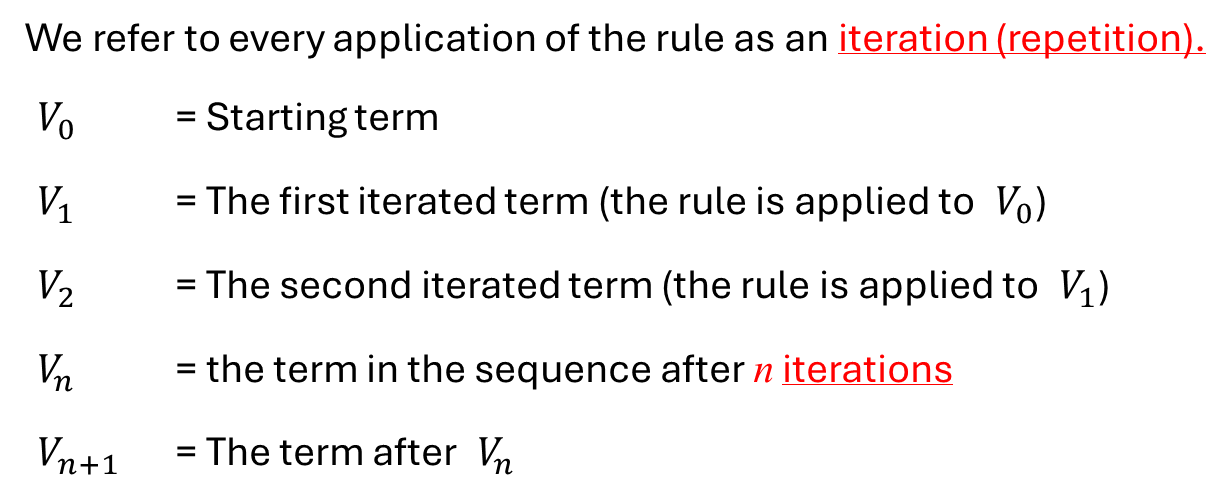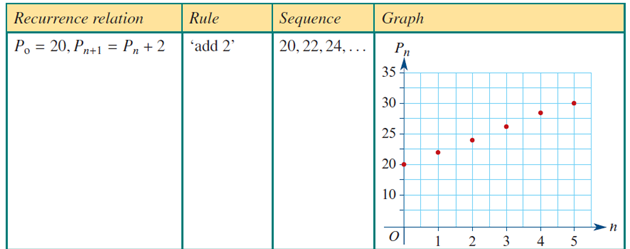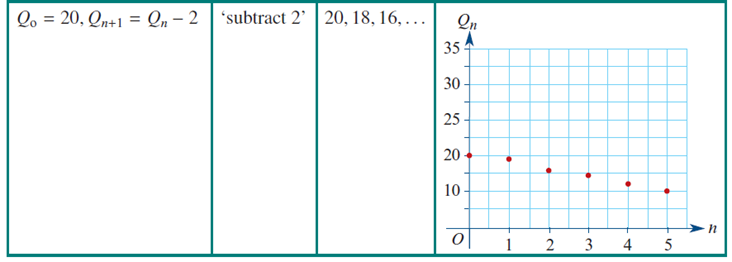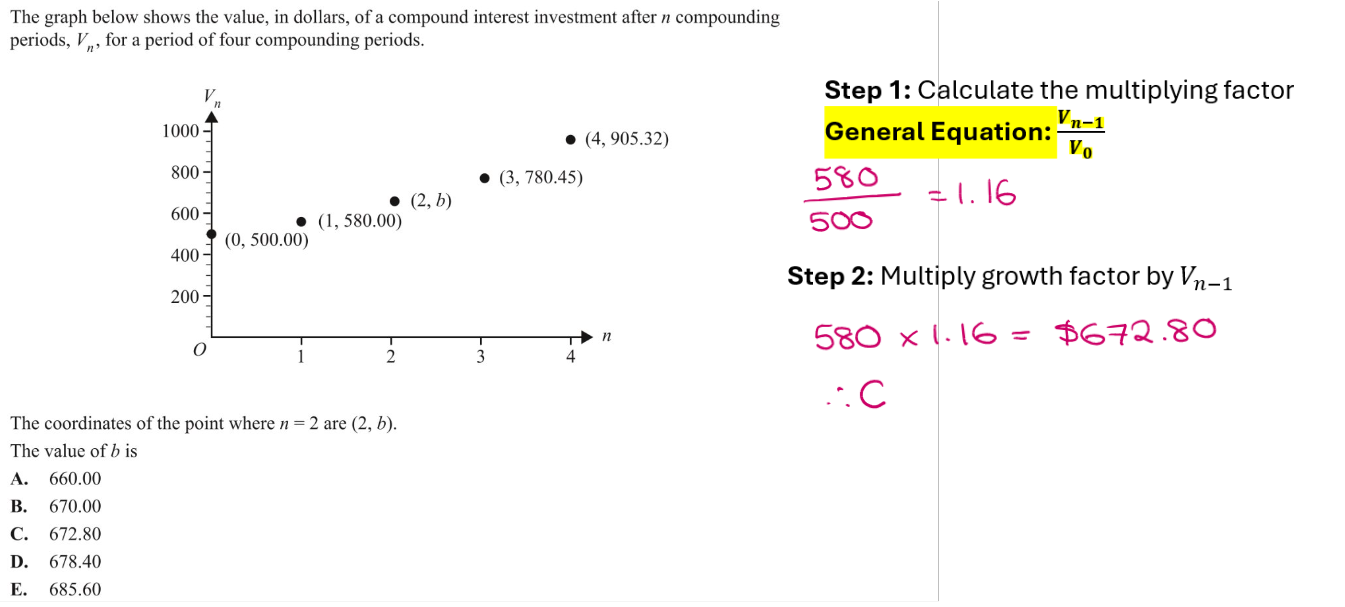Chapter 7 - Modelling growth and decay using recursion
1/36
Earn XP
Description and Tags
Modelling growth and decay using recursion - Chapter 7 Key Terms
Name | Mastery | Learn | Test | Matching | Spaced |
|---|
No study sessions yet.
37 Terms
Sequence
A list of numbers written in succession (order) or progression.
Random Sequence
A sequence where numbers are not related by a rule.
Rule - Based Sequence
A sequence where numbers are related by a rule.
Terms
Numbers in a sequence.
Successive Terms
Next term in the sequence.
Previous Term
Terms that were before.
Term Numbers
*Most will be denoted as v in the exam
u0 - Initial Term of Sequence (usually provided by the question, MUST INCLUDE)
u1 - First Term of Sequence
u2 - Second Term of Sequence
un - nth Term of Sequence
Previous Term of un: un-1
Successive Term of un: un+1
Recurrence Relation
A mathematical rule (equation) that can be used to generate a sequence. Generates one term at a time. Links successive terms.
Recurrence Relations Symbols

Linear Growth

When a quantity increases at regular intervals by the same amount each time. (E.g. Simple Interest)

Linear Decay

When a quantity decreases at regular intervals by the same amount each time. (E.g Unit cost depreciation and flat rate depreciation).

Simple Interest Formula
I = Prt/100
Where P = Amount invested or borrowed IN YEARS (i.e. loan), r = interest rate per annum, t = time in ALWAYS YEARS
Need to convert into years when using this formula!
Principal
The starting amount borrowed for a loan or the starting amount invested in an investment.
Interest
Monthly charge for borrowing money, typically expressed as an annual percentage rate.
Recurrence Relation for Simple Interest


Amount of Investment

Depreciation
The decrease or loss of the value of an item over time.
Depreciation (D) = unit cost x n → n = value of units produced.
Future Value
The likely value of an item at some point in time.
Scrap Value
The value of an item when it is sold off or disposed of. When this happens, the item is written off, meaning it is no longer available.
Flat-Rate Depreciation
NOTE: D = r/100c * V0
Recurrence Relation: V0=…, Vn+1 = Vn-D
RULE: Vn = V0-nD
Unit-Cost Depreciation
When the future value of an item decreases based upon use rather than the age of the item.
Recurrece Relation:
NOTE: D = Depreciation per Output
Recurrence Relation: V0=…, Vn+1 = Vn-D
RULE: Vn = V0-nD
Length of Time in Use (t)

Annual Interest Rate (r)
r = A-P/P*t, A = Final Amount, P = Principal, t = time
Book Value (V)
Book value (V) = Purchase price – (unit cost x n)
Unit Cost

Geometric Sequence
An ordered set of numbers that progresses by multiplying or dividing each term by a common ratio. NON-LINEAR, EXPONENTIAL.
Recurrence Relation for Geometric Sequence

Recurrence Relations for Compound Interest

Compounding Period

13 FORTNIGHTS IN 6 MONTHS!
Reducing Balance Depreciation RR

THE ONLY ONE THAT HAS R<1!
Explicit Rule for Geometric Growth / Decay
Vn = Rn*V0 (multiplying R repeatedly)
Compound Interest Loans and Investments

Reducing-balance depreciation Rule

Interest for Geometric Growth or Decay
Interest = V0 - Vn for decay
Interest = Vn-V0 for growth.
Negative since the book value of an item is decreasing
Nominal Interest Rate
Compound interest rates are usually quoted as annual rates, or interest rates per annum. This annual interest rate is nominal interest rate (名义上银行给你的).
Effective Interest Rate
The actual amount of interest earned as a percentage of the initial amount over one year.
MORE Compounding period, HIGHER Effective Rate (more money earnt)

Exam Tips
‘After’: interest = Vn-V0
‘In’: interest = Vn-Vn-1
R > 1: (R - 1) * 100 * C
R < 1: (1 - R) * 100 * C
Perpetuity Amortization: Interest earned = (r / 100 C) V₀
Rounding: 300.09 rounds to 301, 300.0001 rounds to 300, 299.87 rounds to 300
Decimal Places: Use 2 decimal places unless specified.
INCLUDE BRACKETS!
Refer to picture on right:
Use Vn-1/V0 to find growth factor;
Multiply growth factor by Vn-1
